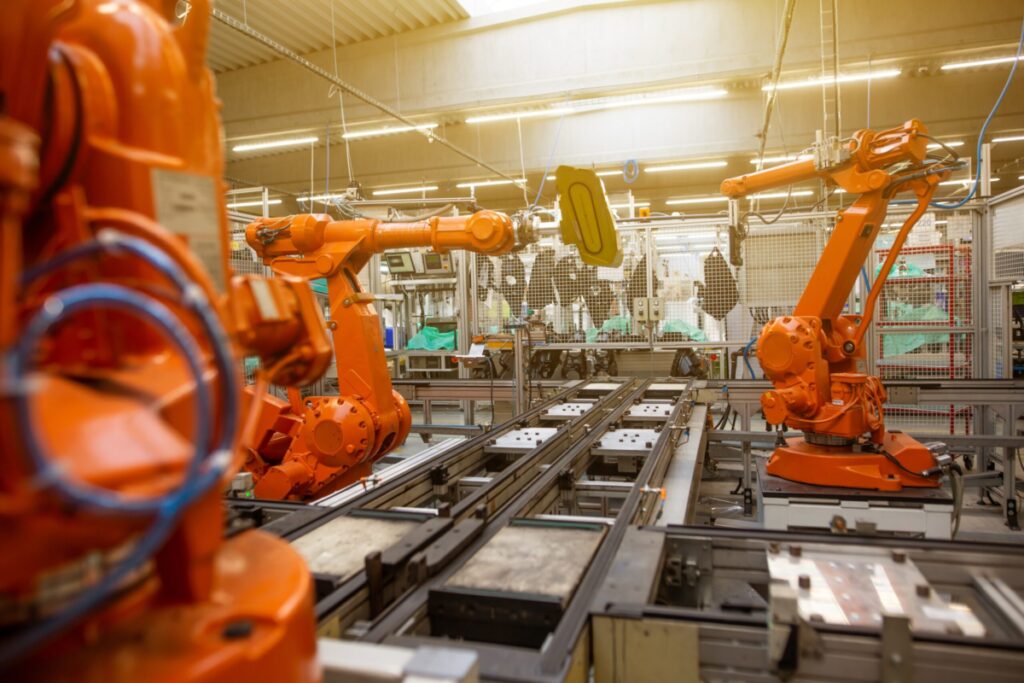Revolutionize Your Business Efficiency with Robotic Process Automation (RPA): The Future is Now! Learn how RPA can automate tasks, improve accuracy, and increase productivity. Discover the benefits and applications of RPA in finance, customer service, and more. Implement RPA effectively and overcome challenges. Explore the future of RPA and its potential for cognitive automation and intelligent process automation. Stay ahead in the evolving world of automation. Check out this article now!
Table of Contents
Revolutionize Your Business Efficiency with Robotic Process Automation (RPA): The Future is Now!
Robotic Process Automation (RPA) has emerged as a game-changing technology that can revolutionize business processes by automating repetitive tasks and freeing up valuable human resources. This article explores the concept of RPA, its benefits, applications, implementation strategies, challenges, and the promising future it holds for businesses.
Read more: Advancing the Frontiers: Emerging Trends in Nanoelectronics Fabrication Techniques
What is RPA?
RPA refers to the use of software robots or virtual assistants to automate rule-based and repetitive tasks traditionally performed by humans. These software robots mimic human actions and interact with various systems, applications, and data sources to execute tasks with precision and speed. RPA enables businesses to automate processes across departments, ranging from finance and HR to customer service and supply chain management.
Benefits of RPA
RPA offers numerous benefits that can significantly enhance business efficiency. Some of the key advantages include:
Improved Accuracy:
RPA eliminates human errors and ensures consistent and accurate execution of tasks, leading to enhanced data quality and reduced rework.
Increased Productivity:
By automating repetitive tasks, employees can focus on higher-value activities that require human judgment and creativity, leading to increased productivity and job satisfaction.
Cost Savings:
RPA reduces operational costs by minimizing the need for manual labor, reducing errors that result in financial losses, and optimizing resource allocation.
Enhanced Scalability:
RPA allows businesses to scale operations easily by deploying additional software robots as workload demands increase, without the need for extensive training or hiring.
Faster Processing:
With RPA, tasks that used to take hours or days to complete can now be executed within minutes, resulting in improved turnaround times and customer satisfaction.
Applications of RPA
RPA can be applied across various industries and functions, transforming the way organizations operate. Some common applications of RPA include:

Data Entry and Processing:
RPA can automate data entry tasks, data validation, data migration, and data extraction from different sources, ensuring accurate and efficient data management.
Invoice and Purchase Order Processing:
PRA can streamline invoice processing, purchase order validation, and reconciliation, reducing manual efforts and accelerating payment cycles.
Customer Service and Support:
RPA can automate customer onboarding, order tracking, and response to frequently asked questions, improving service quality and reducing response times.
Finance and Accounting:
RPA can automate accounts payable and receivable processes, financial report generation, compliance checks, and auditing, enhancing accuracy and efficiency.
Implementing RPA
Identify Suitable Processes:
Analyze existing processes to identify tasks that are rule-based, repetitive, and time-consuming, which can benefit from automation.
Design Automation Workflow:
Create a detailed workflow, defining how the software robots will interact with various systems and applications to complete tasks.
Select the Right RPA Platform:
Choose an RPA platform that aligns with your business requirements, considering factors like scalability, security, ease of use, and integration capabilities.
Test and Deploy:
Thoroughly test the automation workflow and deploy the software robots in a controlled environment before full-scale implementation.
Monitor and Improve:
Continuously monitor the performance of RPA processes, identify bottlenecks, and make necessary improvements to optimize efficiency.
Challenges of RPA
While RP offers numerous benefits, there are also challenges to considePRA:
Process Complexity:
Not all processes are suitable for RPA automation, especially those involving complex decision-making or requiring human judgment.
Integration Issues:
Integrating RPA with existing systems and applications can be challenging, requiring careful planning and coordination with IT teams.
Security Risks:
RPA introduces new security risks, such as unauthorized access to sensitive data or potential vulnerabilities in the automation workflow.
Change Management:
Implementing RPA often requires a shift in mindset and culture within the organization, which may face resistance from employees who fear job displacement.
Future of RPA
The future of RPA is promising, with continued advancements and innovation on the horizon.
Cognitive Automation:
RPA combined with artificial intelligence and machine learning capabilities can enable software robots to handle more complex tasks, including natural language processing and decision-making.
Hyperautomation:
Hyperautomation refers to the integration of RPA with other complementary technologies, such as process mining, analytics, and intelligent document processing, to create end-to-end automation solutions.
Intelligent Process Automation (IPA):
IPA combines RPA with advanced analytics and AI to automate entire business processes, optimizing decision-making, and driving operational excellence.
RPA-as-a-Service:
Cloud-based RPA platforms offer scalability, flexibility, and cost-effective deployment options, enabling businesses to leverage RPA without heavy upfront investments.
Read more: AR Visions Unleashed: Exploring the Boundless Possibilities at the Augmented Reality Summit
Conclusion:
Robotic Process Automation (PRA) has the potential to revolutionize business efficiency by automating repetitive tasks, improving accuracy, and freeing up human resources for higher-value activities. The benefits of RPA, ranging from cost savings to increased productivity, make it a compelling solution for businesses across industries. However, successful implementation of RPA requires careful planning, addressing challenges, and considering the evolving future trends. Embracing RPA can empower businesses to stay competitive in an increasingly automated world.
FAQs:
Will RPA replace human jobs entirely?
RPA is designed to automate repetitive and rule-based tasks, but it does not necessarily lead to complete job replacement. Instead, RPA enables employees to focus on more strategic and creative activities, adding value to the business.
How long does it take to implement RPA?
The implementation time for RPA varies depending on factors such as process complexity, integration requirements, and the scale of automation.
Is RPA suitable for small businesses?
Yes, RPA can benefit small businesses by automating tasks, reducing costs, and enhancing efficiency. There are RPA solutions available that cater to the specific needs and budgets of small businesses.
What skills are required to work with RPA?
Working with RPA typically requires skills in process analysis, workflow design, programming, and system integration. Training programs and certifications are available to develop these skills.
Can RPA be used alongside existing IT systems?
Yes, RPA can integrate with existing IT systems, applications, and databases. However, proper planning and coordination with IT teams are necessary to ensure seamless integration and data security.



